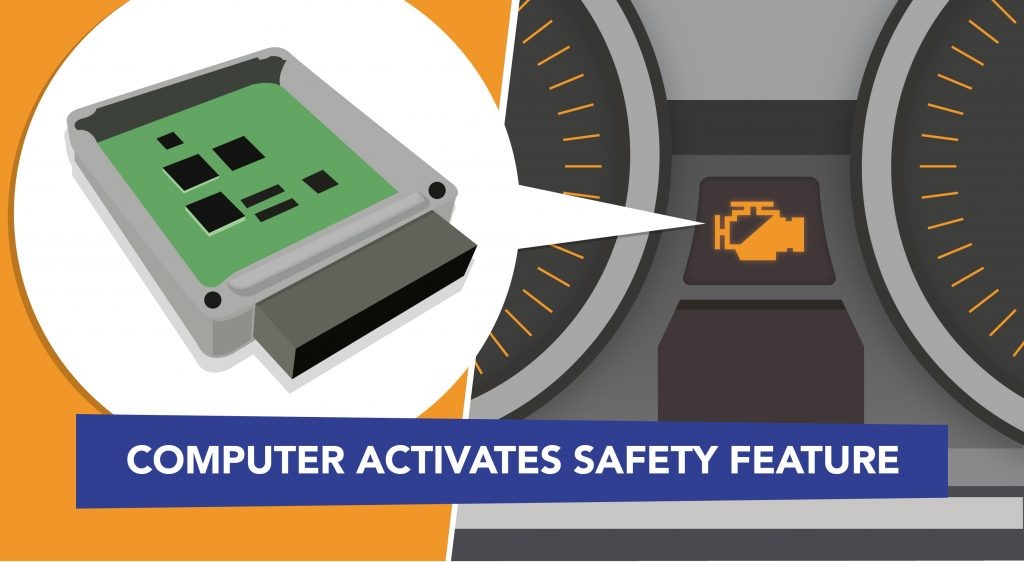Limp mode is a safety feature in modern vehicles designed to protect the engine and transmission from further damage when a fault is detected. This article will delve into the causes of limp mode, its symptoms, and what you should do if your car enters this restricted operating state. Understanding limp mode can help you avoid potentially costly repairs and ensure your safety on the road.
What Triggers Limp Mode?
Limp mode, also known as “limp home mode,” is activated by the car’s onboard computer, the Engine Control Unit (ECU). The ECU constantly monitors various sensors throughout the vehicle, receiving data on engine performance, transmission operation, and other critical systems. When the ECU detects a significant problem, it triggers limp mode to prevent catastrophic damage. This protective measure limits the engine’s speed and power output, often disabling non-essential features like air conditioning.
Common causes of limp mode activation include:
- Faulty Sensors: Malfunctioning sensors providing incorrect data to the ECU, such as oxygen sensors, mass airflow sensors, or throttle position sensors.
- Transmission Issues: Problems within the transmission system, including slipping gears, low fluid levels, or solenoid malfunctions.
- Engine Problems: Issues like misfires, reduced compression, or overheating can trigger limp mode.
- Turbocharger or Supercharger Problems: Issues with boost pressure or wastegate operation in forced induction systems.
- Emissions System Issues: Problems with the catalytic converter, exhaust gas recirculation (EGR) system, or other emissions components.
Recognizing Limp Mode: Common Symptoms
Recognizing limp mode is crucial for taking timely action. Common symptoms include:
- Illuminated Check Engine Light: This is often the first and most obvious sign.
- Reduced Power and Acceleration: The car will feel sluggish and struggle to accelerate.
- Limited Speed: The vehicle’s speed may be capped at a low limit, often around 30-40 mph.
- Transmission Shifting Problems: The transmission may be stuck in a single gear or refuse to shift automatically.
- Disabled Features: Non-essential features like air conditioning or cruise control may be deactivated.
Troubleshooting Limp Mode
While a professional mechanic is best equipped to diagnose and repair the underlying cause of limp mode, here’s a simplified troubleshooting table:
| Problem | Symptoms | Possible Causes | Solution |
|---|---|---|---|
| Limp Mode | Check Engine Light, Reduced Power | Various (see causes section above) | Professional diagnosis required |
| Rev Limit | Engine speed limited to 2500-4000 RPM | Faulty boost control, sensor issues | Mechanic inspection |
| Under-Boost | Lack of power, especially at higher RPMs | Turbo/supercharger problems | Mechanic inspection |
| Poor Performance | Sluggish acceleration, reduced power | Sensor issues, engine problems | Mechanic inspection |
| Restricted Functions | Disabled features, limited speed | Various (see causes section above) | Professional diagnosis required |
What to Do if Your Car Enters Limp Mode
If your car enters limp mode, it’s crucial to take the following steps:
- Safety First: Safely pull over to the side of the road as soon as possible.
- Check Warning Lights: Note any illuminated warning lights on the dashboard.
- Consult Your Owner’s Manual: Your manual may provide specific instructions for limp mode.
- Seek Professional Help: Do not continue driving for extended periods in limp mode. Contact a qualified mechanic for diagnosis and repair. Continuing to drive could exacerbate the problem and lead to more extensive damage.
Conclusion
Limp mode is a vital safety feature designed to protect your vehicle from further harm. While inconvenient, it signals a potentially serious underlying issue that requires professional attention. Ignoring limp mode can lead to costly repairs and compromise your safety. If your car enters this mode, prioritize safety, consult your owner’s manual, and seek immediate assistance from a qualified mechanic.


